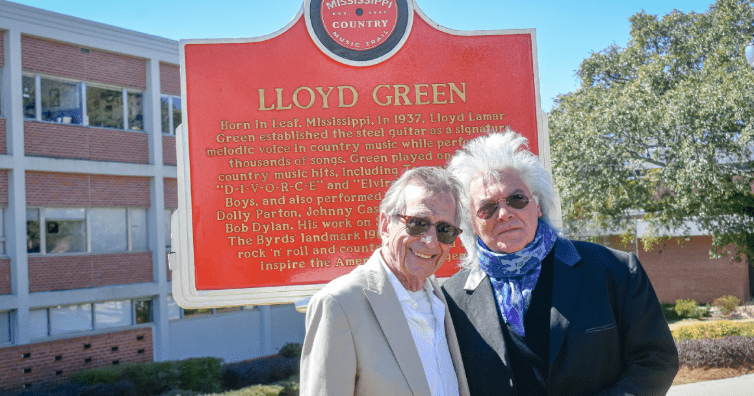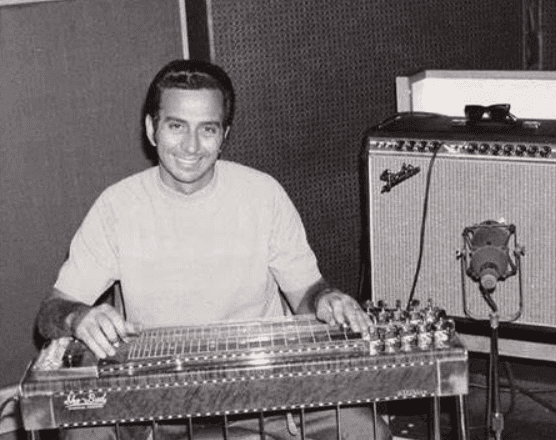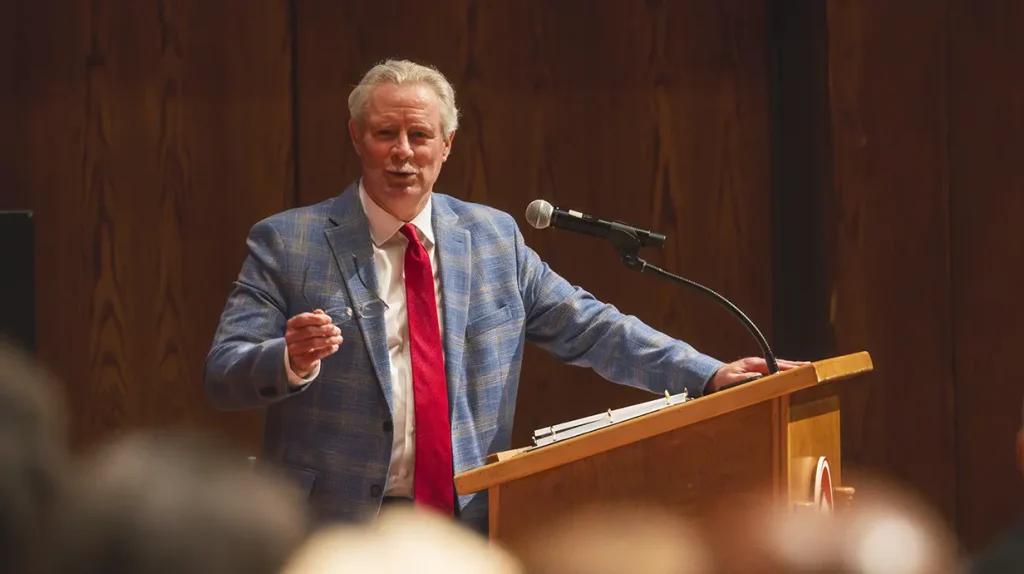
Lloyd Green with Marty Stuart
- The prolific musician from Leaf is the subject of the cultural trail’s 43rd marker.
Popular music will always have its succession of marquee names, but in the country world, the real stars of the show are often the ones standing just outside the spotlight.
In a ceremony held on the campus of the University of Southern Mississippi on February 25, the Mississippi Country Music Trail honored one of those talents by dedicating a marker to remember his impact on country music.
Lloyd Green, a native of Leaf in south Mississippi, not only played on more than 30,000 recordings made between the 1950s and the early 2000s — he was also the architect of the steel guitar’s ascendency from a background instrument to the lead instrument of choice in Nashville.
Across his five-decade career, Green lent his sound to 116 number one hits. That’s Green playing the signature steel-guitar melodies on Tammy Wynette’s 1968 smash “D-I-V-O-R-C-E,” for example, and his long list of credits includes songs sung by luminaries like George Jones, Johnny Cash, Paul McCartney, Loretta Lynn, Don Williams, and Dolly Parton.
Green’s path to becoming one of Nashville’s most respected session musicians began early. At just seven years old, he picked up an Oahu guitar and began learning the slide techniques of Hawaiian music. Within a few years, he was playing at local events in Mobile, Alabama, where his family had relocated.
But hearing Webb Pierce’s “Slowly,” the first song to feature a pedal-altered string pitch, sparked a creative breakthrough for a teenage Green. In a burst of inspiration, he welded a foot pedal from a Ford Model A car to the instrument’s tuning mechanism to mimic the sound he heard.
Green’s talent on the pedal steel guitar quickly turned heads. While attending Mississippi Southern College (now USM), he juggled academics with weekend gigs at barn dances in Bogalusa, Louisiana, and on local shows around Hattiesburg. He often backed up established acts like Hank Locklin, yet still viewed music as a temporary pursuit. But at 19, he made his move.
“I thought, ‘If I can get this out of my system, I’ll have a chance to see the country, and it’d be my one and only time, and then I’ll go back to school and be more focused on my education,’” he said.
Green hitched a ride to Nashville and arrived the day after Christmas in 1956. He quickly landed a gig with singer Faron Young and met Dorothy “Dot” Jewel Edwards, whom he married six months later. Over the next few years, Green alternated between music gigs and selling shoes to support their growing family.

By the mid-1960s, Green had established himself as a first-call session musician, sought after for his lyrical playing and instinctive sense of melody. His work on The Byrds’ seminal 1968 album Sweetheart of the Rodeo played a key role in the birth of country-rock, a hybrid genre that would go on to influence The Eagles and shape generations of musicians. The 1970s marked a golden era for Green, who balanced his solo recordings with sessions for stars like Charley Pride, Ronnie Milsap, and Crystal Gayle.
He was so busy, in fact, that he turned down a gig touring with Wings, the band formed by ex-Beatle Paul McCartney in the 1970s. “You just made the biggest mistake of your whole career, your whole life,” a friend told him at the time. “He said, ‘You could have named your price.’ But it wasn’t a matter of money or fame,” Green said. “I was making plenty of money, but I could probably have made more from that one tour than I made in five years.”
The Nashville Sound he helped create was falling out of fashion, though, and a sudden inner ear disorder in 1988 forced him to retire during a Dolly Parton recording session — but not before he added two more number one hits to his résumé: “Yellow Roses” and “Why Did You Come in Here Lookin’ Like That,” which he recorded before stepping down.
Remarkably, his condition improved, allowing him to return to the studio and record with Alan Jackson and others before retiring fully in the 2000s.
At the height of his career, Green logged 400 to 500 recording sessions annually, crossing over into jazz and other genres with ease. In 1988, his induction into the Steel Guitar Hall of Fame secured his place among the greatest steel guitarists of all time.
“Lloyd Green’s marker is a great addition in the telling of a vibrant story that celebrates the lives of the state’s sons and daughters who’ve made an indelible mark on country music,” wrote country music star and Philadelphia, Mississippi, native Marty Stuart on Facebook after the marker unveiling ceremony.
“Back in 2010, when I asked Mississippi Governor Haley Barbour if we could have a historical Country Music Trail to go along with the Blues Trail that runs throughout the state, the request was granted,” he added. “Days like today are what I dreamed of.”











